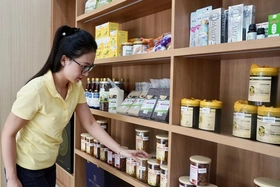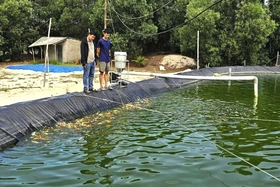PWUuO8SD4buDXeG7k+G7k+G7rDrDteG7mMOp4buZ4buD4bq3OiTDlOG7lV1mxJE74buY4buRw6k7w7Xhu5Fn4buFZ+G7meG6t+G7kzvhuq/DqcSRw6nhu5ld4buDw6l6XeG7mcOpZ2Y7w6lmO13EkeG7kcOpxIPhu5Xhu4Phu5nhu5Xhu5Fd4buDO8O14buRZ+G6r+G7lcSD4buZw6lnZj0vZS4kPcO1O8SD4buDXeG7k+G7k+G7rDrDtUXhurdd4bqvOiThuq7hurdkw6lmw6lmxJE74bqvw6nEkcOp4buZXeG7gzvhu5nhu5FdZuG7k2Rn4buR4buFXeG7mcOpZ2Y74buT4buZXWbhuq/hu5M7XeG7kztdO8SD4buR4buVxIPDqV3hu4M7XWbhuq874bq34buT4buT4bq3ZuG7mcOpXeG7gzvhu5Vm4bqv4bq34buR4buZXeG7h8OpZsSRO+G7mWc74buR4bq3dGfhu4Phu5Xhu5nDqWdmw6l64bq3O+G7mWXhurc74buDXWbhuq/hu5PEg13DteG6tztnZDvhu5ll4bq3O13EkeG7kcOpxIPhu5Xhu4Phu5nhu5Xhu5Fd4buDO+G7k+G6t8SD4buZZ+G7keG7tjvDiWY74buR4bq3xIPhurdm4buZO+G7mcOp4buF4bq34buT4bu0O+G6t2bhu5nDqeG7mcOp4bq34buTO3XDqeG7mWXDqWY74buZZeG6tztdxJHhu5HDqcSD4buV4buD4buZ4buV4buRXeG7gzvDqWbhuq/hu5Xhu5Phu5nhu5HDueG7tDtd4buTO3Xhurfhu4Phu4M7XeG7kztn4buRxJFdZsOpel3hu5nDqWdm4buTO11m4bqvO8OpZuG6r8OpdMOp4bqv4buVXeG7g+G7kzvDqWY7w5Thu5VdZsSRO+G7mOG7kcOpO8OV4buRZ3TDqWbEg+G6t+G7tDtlXXThurc7XcSD4buZw6l04bq34buDw7k74bq34buFw6Phu5FdxIPhurfhuq874bqvw6nEkcOp4buZXeG7g8Opel3hu5nDqWdmO8OpZjvEkeG7lcOp4bqvw6lmxJHhu7Q74buFXWZdxJHDqWbEkeG7tDtdZuG6rzvhurdmZV1mxIPDqWbEkTvDteG7kWfhuq/hu5XEg+G7mcOpZ2bhu7Y74buYZcOp4buTO8SDZ2bEg+G6t+G7keG7meG6t+G6rzvhurdkZGfhu5Hhu5k7XcOp4buF4buTO+G7mWc74bqv4bq3xIPhu5Hhurdd4buT4bq3O8O14buRZ+G6r+G7lcSD4buZw6lnZjvhurfDusO14bq3ZuG7k+G6t+G7k+G7tDvhurdmZV1mxIPhurc74buDXcOjZ+G7kTvDteG7kWfhuq/hu5XEg+G7mcOpdMOp4buZw7nhu7Q7XWbhuq87w7Xhu5FnxJHhu5Hhurfhu5Phu5PDqXThurfhu4PDuTvhurfDuuG7meG6t2bhuq874buZZeG6tzvhu5HhurddxINlO2dkO8OU4buVXWbEkTvhu5jhu5HDqeKAmeG7kztdxJHhu5HDqcSD4buV4buD4buZ4buV4buRXeG7gzvDteG7kWfhuq/hu5XEg+G7meG7k+G7tj0vw7UkPcO1O8SD4buDXeG7k+G7k+G7rDrDtcODZ+G6r8O5OiQ9w6nhu4XEkTvEg+G7g13hu5Phu5Phu6w6w6nEguG6t2bhu5nhurfhu5E6O+G7k+G7kcSD4busOmXhu5nhu5nDteG7k8OdLy/Eg+G7tsOjXWfDtOG7lV1mxJHhu5nhu5HDqeG7tnRmL+G6r+G6t+G7k+G7h+G7mWfDtS9m4bq3deG7ky8hKDwuLy4uKeG6ryEuWyksPC7hu5khKS594buDPi3hu4PhurctXWYtKH19PC0u4bu2deG6t8Ojw7U6O13hu4Phu5nhu6w6w5Thu5VdZsSRO+G7mOG7kcOpO8O14buRZ+G7hWfhu5nhurfhu5M74bqvw6nEkcOp4buZXeG7g8Opel3hu5nDqWdmO8OpZjtdxJHhu5HDqcSD4buV4buD4buZ4buV4buRXeG7gzvDteG7kWfhuq/hu5XEg+G7mcOpZ2Y6Oy8kPS/DtSQ9w7U7xIPhu4Nd4buT4buT4busOsO1xIJdw7Xhu5nDqWdmOiThu6vDtcO14buDw7nDqWbEkTvhu5Vm4buFXWZm4bq34bqvO13hurfhu5HDqV3hu4M7dOG6t2XDqcSD4buD4bq34buTO0Dhu5Thu6tU4buTIzvhu5lnO+G7k8O14buRXcO5O8O14bq34buT4buZw6nEg8Op4bqv4bq34buTO2Rn4buRO8O14bq34buT4buZO11m4bqvO+G6r8Op4buT4bq3XeG7k+G6tzvEg2dm4buZ4buRZ+G7gztnZjvhu5HDqcSD4bq3O8SD4buRZ8O14buT4bu2O8OVZWfhu5lnw5074buC4bu24burPS/DtSQ9w7U7xIPhu4Nd4buT4buT4busOsO1w4Nn4bqvw7k6JEbEkeG7lcO54bq3ZjtFZ2bEkTvDlWXhu5VnZsSR4bu0O+G6ruG6t8O14buV4buZw7k74bquw6nhu5HhurfEg+G7mWfhu5E7Z2Q74buZZeG6tzvhuq7hurfDtV3hu5Hhu5nhu4Xhurdm4buZO2dkO+G7q8SR4buRw6nEg+G7leG7g+G7meG7leG7keG6tztdZuG6rzvhu5Dhu5Xhu5Fd4buDO+G6ruG6t3Thurfhu4Nnw7Xhu4Xhurdm4buZ4bu0O2XDqcSRZeG7g8OpxJFl4buZ4bq34bqvO+G7mWXhurc7w7Vn4buTw6nhu5nDqXThurc7Z+G7leG7mcSDZ+G7heG6t+G7kztnZDvhu5ll4bq3O+G6t2bEg2fhu5Xhu5FdxJHhurfhu4Xhurdm4buZO8SRw6l04bq3Zjvhu5lnO+G7g2fEg13hu4PDqeG7mcOp4bq34buTO11m4bqvO8OpZuG6r8OpdMOp4bqv4buVXeG7g+G7kzvDqWY7XeG6r3RdZsSDw6lmxJE7ZcOpxJFlLeG7meG6t8SDZTtdxJHhu5HDqcSD4buV4buD4buZ4buV4buRXeG7gzvhuq/hurd04bq34buDZ8O14buF4bq3ZuG7mTvDqWY7w5Thu5VdZsSRO+G7mOG7kcOp4bu2O0bhu5Xhu4Xhurfhu5Fn4buV4buTO13EkeG7kcOpxIPhu5Xhu4Phu5nhu5Xhu5Fd4buDO8O14buRZ+G6r+G7lcSD4buZO8Oj4buRXWbhuq/hu5M7ZOG7kWfhu4U74buZZeG6tzvDteG7kWd0w6lmxIPhurc7ZV104bq3O+G7k+G7lcSDxIPhurfhu5Phu5Nk4buV4buD4buDw7k7w7Xhurdm4bq34buZ4buRXeG7meG6t+G6rzvDo2fhu5llO+G6r2fhu4Xhurfhu5Phu5nDqcSDO11m4bqvO8OpZuG7meG6t+G7kWZd4buZw6lnZl3hu4M74buFXeG7keG7h+G6t+G7meG7k+G7tDvEg13hu5nhurfhu5HDqWbEkTvhu5lnO+G6r8Op4buTxIPhurfhu5Fmw6lmxJE7xIPhu5Xhu5Phu5ln4buF4bq34buRO+G7k+G6t8SR4buF4bq3ZuG7meG7kztdZuG6rzvhu5PDqcSRZsOpZMOpxINdZuG7meG7g8O5O8O14buRZ8O14bq34buD4buDw6lmxJE74buTZ8SDw6lnLeG6t8SDZ2Zn4buFw6nEgzvhuq/hurd04bq34buDZ8O14buF4bq3ZuG7mTvDqWY74buZZeG6tzvhu5HhurfEkcOpZ2bhu7Y9L8O1JD3DtTvEg+G7g13hu5Phu5Phu6w6w7XDg2fhuq/DuTok4burxIPhu5nDqXTDqeG7mcOp4bq34buTO+G7keG6t+G7g13hu5nhurfhuq874buZZzvhu5ll4bq3O13DtcO14buDw6nEg13hu5nDqWdmO2dkO+G6r8OpxJHDqeG7mV3hu4M74buZ4bq3xINlZmfhu4NnxJHDuTvDqWY74buZZeG6tztdxJHhu5HDqcSD4buV4buD4buZ4buV4buRXeG7gzvhu5PhurfEg+G7mWfhu5E7ZV104bq3O8O14buDXcO54bq34bqvO107w7XDqXRn4buZXeG7gzvhu5Fn4buD4bq3O8OpZjvhu5Hhurfhu5NlXcO1w6lmxJE7ZF3hu5Hhu4Xhurfhu5Hhu5MnO8O14buRZ+G6r+G7lcSD4buZw6lnZjvhu4XDqWbhuq/hu5Phurfhu5nhu7Q74buT4buZ4bq34bq34buRw6lmxJE74buZZeG6t+G7hTvhu5lndV3hu5Hhuq/hu5M74buFZ+G6r+G6t+G7kWbhu7Q74buT4buFXeG7keG7meG7tDtdZuG6rzvhu5Phu5Xhu5Phu5ldw6lmXcOj4buD4bq3O13EkeG7kcOpxIPhu5Xhu4Phu5nhu5Xhu5Fd4buDO8O14buRXcSD4buZw6nEg+G6t+G7k+G7tj0vw7UkPcO1O8SD4buDXeG7k+G7k+G7rDrDtcODZ+G6r8O5OiRGZ+G7mV3Do+G7g8O54bu0O8OpZjvhu5ll4bq3O8SD4buV4buD4buZw6l0XeG7mcOpZ2Y74bqvZ+G7hV3DqWbhu7Q74buZZeG6tzvDteG7kWd0w6lmxIPhurc7w6NnXeG7k+G7meG7kztndOG6t+G7kTsoLDvEkeG7keG6t+G6t2ZlZ+G7leG7k+G6t+G7kztdZuG6rztm4bq34buZO2Vn4buV4buT4bq34buTO+G7k8O1XWZmw6lmxJE7XcO1w7Xhu5Fnw7rDqeG7hV3hu5nhurfhu4PDuTsoO2XhurfEg+G7mV3hu5Hhurfhu5Phu7Q74bq34buFw7Xhu4Nnw7nDqWbEkTtlw6nEkWUt4buZ4bq3xINlO+G7heG6t+G7mWVn4bqv4buT4bu2O+G7q+G6r+G6r8Op4buZw6lnZl3hu4Phu4PDueG7tDvhu4Vn4buR4bq3O+G7mWVdZjs84bu0LCwsO2XhurfEg+G7mV3hu5Hhurfhu5M7Z2Q7xIPhu5Fnw7U7XeG7keG6t13hu5M7ZV104bq3O13huq9nw7Xhu5nhurfhuq874bq3xINnZmfhu4XDqcSDXeG7gzvDqeG7keG7kcOpxJFd4buZw6lnZjvhu5nhurfEg2VmZ+G7g2fEkcO54bu2O+G7mGXhurc74buV4buZw6nhu4PDqXpd4buZw6lnZjtnZDvhuq/hu5FnZuG6t+G7kztkZ+G7kTvhu5PDteG7kV3DucOpZsSRO2Xhurfhu5HDo8OpxIPDqeG6r+G6t+G7k+G7tDtk4bq34buR4buZw6nhu4PDqXrhurfhu5Hhu5Phu7Q7XWbhuq87w7Xhurfhu5Phu5k7xINnZuG7meG7kWfhu4M7ZV3hu5M7w6PhurfhurdmO8Op4buFw7Xhu4Phurfhu4Xhurdm4buZ4bq34bqvO2dmO+G7kcOpxIPhurfhu7Q7xINd4buT4buTXXRd4bu0O11m4bqvO+G7keG7lcOjw6Phurfhu5E7ZMOp4bq34buD4bqv4buT4bu0O8SDZ3Thurfhu5HDqWbEkTtdZjtd4buR4bq3XTvhurfDusSD4bq34bq34bqvw6lmxJE7POG7tDwsLDtl4bq3xIPhu5ld4buR4bq34buT4bu2PS/DtSQ9w7U7xIPhu4Nd4buT4buT4busOsO1w4Nn4bqvw7k6JOG7mGXhurc7xIPhu5Xhu4Phu5nDqXRd4buZw6lnZjtnZDvEg+G7kWfDteG7kzvDqWY7XeG6r2Xhurfhu5HhurdmxIPhurc74buZZztn4buRxJFdZsOpxIM74buT4buZXWbhuq9d4buR4bqv4buT4bu0O2Zd4buZ4buV4buRXeG7gztkXeG7keG7hcOpZsSR4bu0O1TDqeG6t+G7mcSQ4burw5Xhu7Q7XWbhuq87ZGdn4bqvO+G7k11k4bq34buZw7k7xIPhu5HDqeG7meG6t+G7kcOpXTvhurdmxINn4buFw7Vd4buT4buT4bq34buTO2d04bq34buROy7hu7QoPiw7ZeG6t8SD4buZXeG7keG6t+G7k+G7tjvhu5hl4bq3O8O14buRZ3TDqWbEg+G6tztlZ+G7k+G7meG7kzsuWzvhurfhu5Phu5ldw6Phu4PDqeG7k2Xhu4Xhurdm4buZ4buTO+G6t+G7hcO14buDZ8O5w6lmxJE7w7Thu5Vd4buDw6nhu5nDuTvhu4VdZl3EkeG6t+G7heG6t2bhu5k74buTw7nhu5Phu5nhurfhu4Xhu5M7xINn4buFw7Xhu4PDqV1m4buZO3XDqeG7mWU7ReG7q8SCxILDlTtdZuG6rzvDieG7kkc74buT4buZXWbhuq9d4buR4bqv4buTO8OpZjvhu5ll4bq3O8O14buRZ8SD4bq34buT4buTw6lmxJE7Z2Q7XcSR4buRw6nEg+G7leG7g+G7meG7leG7kV3hu4Phu7Q7ZGfhu5Hhurfhu5Phu5nhu5HDueG7tDtdZuG6rztkw6nhu5Nl4bq34buRw7k7w7Xhu5Fn4bqv4buVxIPhu5nhu5Phu7Y7ROG7leG7keG7mWXhurfhu5Hhu4Vn4buR4bq34bu0Oy4uPDtHxIJHw5U7QEdm4bq3O8SCZ+G7heG7heG7lWbhurfhu7Q7R2bhurc7w5Xhu5Fn4bqv4buVxIPhu5kjO8Op4buZ4bq34buF4buTO8Oj4bq3XeG7kTvhu5ll4bq3O0fEgkfDlTvhu5Phu5ld4buFw7U7XeG7g2dmxJE7dcOp4buZZTvhu5nhu5FdxIPhurddw6PDqeG7g8Op4buZw7k7ZOG6t13hu5nhu5Xhu5Hhurfhu5Phu7Q74buTZWd1xINd4buTw6lmxJE7XWbhuq874buT4bq34buD4buDw6lmxJE7Z2Y7dF3hu5HDqWfhu5Xhu5M74bq3LcSDZ+G7heG7heG6t+G7kcSD4bq3O8O14buDXeG7mWRn4buR4buF4buT4bu2O0Zn4buZXcOj4buDw7nhu7Q7IXs7w7Xhu4NdZuG7mcOpZsSRO13hu5HhurddO8SDZ+G6r+G6t+G7kztlXXThurc7w6PhurfhurdmO8SR4buRXWbhu5nhurfhuq87ZGfhu5E74bq3w7rDtWfhu5Hhu5k7XWbhuq874bqvZ+G7heG6t+G7k+G7mcOpxIM7xINnZuG7k+G7leG7hcO14buZw6lnZjtdxIPhu5Fn4buT4buTO+G7g2fEg13hu4PDqeG7mcOp4bq34buT4bu0O+G6t2bEg2fhu4XDtV3hu5Phu5PDqWbEkTtdO+G7k8SDXeG7g+G6tztnZDtndOG6t+G7kTsh4bu0ISh7O2XhurfEg+G7mV3hu5Hhurfhu5Phu7Y9L8O1JD3DtTvEg+G7g13hu5Phu5Phu6w6w7XDg2fhuq/DuTokw4lmO+G7mWXhurc74buDw6l04bq34buT4buZZ8SD4buHO+G7k+G6t8SD4buZZ+G7keG7tDvhu5ll4bq3O8OpZuG7meG6t8SR4buRXeG7mcOpZ2Y7Z2Q74bqvw6nEkcOp4buZXeG7gzvhu5nhurfEg2VmZ+G7g2fEkcO5O2Rn4buRO+G7g8OpdOG6t+G7k+G7mWfEg+G7hzvDteG7kWfhuq/hu5XEg+G7mcOpZ2Y7XWbhuq874bqvw6nhu5Phurdd4buT4bq3O8O14buR4bq3dOG6t2bhu5nDqWdmO2Vd4buTO8SRXcOpZuG6t+G6rzvhu5nhu5FdxIPhu5nDqWdm4bu2O+G7mGXDqeG7kzvDqWbEg+G7g+G7leG6r+G6t+G7kzvhu5ll4bq3O+G7leG7k+G6tztnZDvEkeG6t2fEkeG7kV3DtWXDqcSDO8OpZmRn4buR4buFXeG7mcOpZ2Y74buTw7nhu5Phu5nhurfhu4Xhu5M7QMSQw4nhu5IjO2Rn4buRO+G7hWdmw6nhu5ln4buRw6lmxJE7XWbhuq87xINnZuG7meG7kWfhu4Phu4PDqWbEkTtddMOpXWY7w6lmZOG7g+G7leG6t2Z6XeG7tDvhu5ll4bq3O13DtcO14buDw6nEg13hu5nDqWdmO2dkO+G7mWXhurc7VMOp4bq34buZZl3hu4U74burZsOp4buFXeG7gzvhuq7DqeG7k+G6t13hu5Phurc7w4lmZGfhu5Hhu4Vd4buZw6lnZjvhu5LDueG7k+G7meG6t+G7hTtAVOG7q0XDieG7kiM7ZGfhu5E74buFXWZdxJHDqWbEkTvhu4PDqXThurfhu5Phu5lnxIPhu4c7XWbhuq87w7Vn4buV4buD4buZ4buRw7k74bqvw6nhu5Phurdd4buT4bq34buT4bu0O11m4bqvO+G7mWXhurc74buV4buZw6nhu4PDqXpd4buZw6lnZjtnZDtnZuG7g8OpZuG6tztdw7Thu5Vd4buZw6nEgzvhuq/DqeG7k+G6t13hu5Phurc74buR4bq3w7Vn4buR4buZw6lmxJE74buTw7nhu5Phu5nhurfhu4Xhu5M7ZGfhu5E74buFXWZdxJHDqWbEkTtdw7Thu5Vd4buZw6nEgzvhuq/DqeG7k+G6t13hu5Phurfhu5Phu7Y9L8O1JD3DtTvEg+G7g13hu5Phu5Phu6w6w7XDg2fhuq/DuTok4buEXWbDuTvhu4PDqXThurfhu5Phu5lnxIPhu4c7ZWfhu5Xhu5PhurdlZ+G7g+G6r+G7kztlXXThurc7XeG6r2fDteG7meG6t+G6rzvhu5Phu4Nd4buVxJFl4buZ4bq34buRO+G7hV1mXcSR4bq34buF4bq3ZuG7mTtdZuG6rzvhu5nhu5FdxIPhurddw6PDqeG7g8Op4buZw7k74buTZ2Thu5l1XeG7keG6t+G7tDtd4buDZ2bEkTt1w6nhu5llO8SD4buDZ+G7k+G6t+G6rzvDo13hu5FmO+G7meG6t8SDZWZn4buDZ8SRw7k7ZOG6t13hu5nhu5Xhu5HDqWbEkTtdw6nhu5E7xINnZuG6r8Op4buZw6lnZsOpZsSRO+G7k8O54buT4buZ4bq34buF4buT4bu0O13hu5Xhu5ln4buFXeG7mcOpxIM7ZOG6t+G6t+G6r8OpZsSRO11m4bqvO+G6r+G7kcOpZuG7h8OpZsSRO+G7meG7kWfhu5XEkWXhu5Phu7Q7XeG7leG7mWfhu4Vd4buZw6nEgzvDtWfhu5Xhu4Phu5nhu5HDuTvDo+G7kWdn4bqv4bq34buR4buT4bu0O11m4bqvO3Vd4buT4buZ4bq3O+G7meG7keG6t13hu5nhu4Xhurdm4buZO+G7mWc74bq3ZuG7k+G7leG7keG6tzvhurdmdMOp4buRZ2bhu4Xhurdm4buZXeG7gztlw7nEkcOp4bq3ZuG6tzvhu5ll4buRZ+G7lcSRZTvhu4XDqcSD4buRZ8Ojw6ld4buDO11m4bqvO8Ojw6lnxJFd4buTO+G7meG6t8SDZWZn4buDZ8SRw6nhurfhu5Phu7Y9L8O1JD3DtTvEg+G7g13hu5Phu5Phu6w6w7XDg2fhuq/DuTokw4lmO+G7mWXhurc74buT4bq3XWRnZ+G6rzvhu5PhurfEg+G7mWfhu5Hhu7Q7XWY7w6lmxIPhu5Hhurdd4buTw6lmxJE7ZuG7leG7hcOj4bq34buRO2dkO2Rd4buR4buFw6lmxJE7ZWfhu5Xhu5PhurdlZ+G7g+G6r+G7kztd4buR4bq3O8OpZsSDZ+G7kcO1Z+G7kV3hu5nDqWbEkTtd4buV4buZZ+G7hV3hu5nDqcSDO+G6t8O04buVw6nDteG7heG6t2bhu5k7w6lmO+G7k2Xhu5HDqeG7hcO1O2Rd4buR4buFw6lmxJHhu7Q74buT4buVxINlO13hu5M7XeG7leG7mWfhu4Vd4buZw6nEgzvhu5Nl4buRw6nhu4XDtTtk4bq34bq34bqv4bq34buR4buT4bu0O2fDusO5xJHhurdmO3Vd4buRZsOpZsSRO+G6r+G6t3TDqcSD4bq34buT4bu0O11m4bqvO8O1Z3Xhurfhu5E7dV3hu5Fmw6lmxJE74buFXcSDZcOpZuG6t+G7k+G7tjvhu6vhuq/huq/DqeG7mcOpZ2Zd4buD4buDw7nhu7Q74buZZeG6tztdw7XDteG7g8OpxINd4buZw6lnZjtnZDvDtWdm4bqvO3Vd4buZ4bq34buRO+G6t2Z0w6nhu5FnZuG7heG6t2bhu5ld4buDO+G7hWdmw6nhu5ln4buRw6lmxJE7XWbhuq87dV3hu5Fmw6lmxJE74buTw7nhu5Phu5nhurfhu4Xhu5Phu7Q7xINnZmbhurfEg+G7meG6t+G6rzvhu5lnO+G7mWXhurc7w6lm4buZ4bq34buRZuG6t+G7mTt1w6nhu5llO+G7k+G7hV3hu5Hhu5nDtWVnZuG6t+G7k+G7tDtlXeG7kzvDo+G6t8SDZ+G7heG6tzvhu4Vn4buR4bq3O8O14buR4bq3dF3hu4Phurdm4buZ4bu2PS/DtSQ9w7U7xIPhu4Nd4buT4buT4busOsO1w4Nn4bqvw7k6JOG7mGXhurc7w6nhu4XDteG7g+G6t+G7heG6t2bhu5ld4buZw6lnZjtnZDtU4buE4buSO0BU4bq34buT4buT4bq34buDO+G7hGdmw6nhu5ln4buRw6lmxJE74buSw7nhu5Phu5nhurfhu4UjO+G7meG6t8SDZWZn4buDZ8SRw7k74buZZzvhu5nhu5FdxIPhu4c7ZMOp4buTZcOpZsSRO3Thurfhu5Phu5Phurfhu4M74buBZ+G7leG7kWbhurfDueG7kztdZuG6rzvhu4VdZl3EkeG6tzvhu5ll4bq3w6nhu5E7XcSD4buZw6l0w6nhu5nDqeG6t+G7k+G7tDvhu5ll4bq3O+G7leG7k+G6tztnZDtlZ+G7kcOpemdm4buZXeG7gzvhu5NnZl3hu5E74buTxINdZmbhurfhu5Hhu5M7w6lmO8O14buV4buR4buT4bq3O+G7k+G6t8OpZuG6tztkw6nhu5Nlw6lmxJHhu7Q74buZZeG6tzvhuq/hurfDteG7g2fDueG7heG6t2bhu5k7Z2Q74buZZeG6tztUw5o7LnssLDvEg2fhu4Xhu4Xhu5Vmw6nEg13hu5nDqWdmO+G7hV3Eg2XDqWbhurc7dcOp4buZZTvDqWbhu5nhurfEkeG7kV3hu5nhurfhuq874buTXeG7meG6t+G7g+G7g8Op4buZ4bq3O8O1Z+G7k8Op4buZw6lnZsOpZsSR4bu0O+G7mWXhurc7XcO1w7Xhu4PDqcSDXeG7mcOpZ2Y7Z2Q74buRXeG6r13hu5E74buTxINdZmbhurfhu5E74buTw7nhu5Phu5nhurfhu4Xhu5M7w6lmO8SRw6nhu4Phu4M7ZuG6t+G7mTtkw6nhu5Nlw6lmxJHhu7Q7XWbhuq874buZZeG6tzvDqWbhu5Phu5ld4buD4buDXeG7mcOpZ2Y7Z2Q7XeG7leG7mWfhu4Vd4buZw6nEgzvhu5Phu5nhurfhurfhu5HDqWbEkTvhu5PDueG7k+G7meG6t+G7heG7kztnZjtnZGThu5NlZ+G7keG6tztkw6nhu5Nlw6lmxJE7dOG6t+G7k+G7k+G6t+G7g+G7kzvhu5PDqcSRZsOpZMO5O13huq90XWbEg+G6t+G7heG6t2bhu5nhu5M7w6lmO+G7mWXhurc7ZMOp4buTZcOpZsSRO8OpZuG6r+G7leG7k+G7meG7kcO54bu2PS/DtSQ9w7U7xIPhu4Nd4buT4buT4busOsO1w4Nn4bqvw7k6JOG7ksOp4buF4buV4buD4buZXWbhurdn4buV4buT4buDw7nhu7Q74bq3ZGRn4buR4buZ4buTO13hu5Hhurc74buVZuG6r+G6t+G7kXVdw7k74buZZzvhurdmZV1mxIPhurc74buZZeG6tzvhu5Phu4fDqeG7g+G7gzvhu5Phurfhu5k7Z2Q7ZeG7leG7hV1mO+G7keG6t+G7k2fhu5Xhu5HEg+G6t+G7kzvDqWY74buZZeG6tztdxJHhu5HDqcSD4buV4buD4buZ4buV4buRXeG7gzvhu5PhurfEg+G7mWfhu5Hhu7Q7w7Xhu5FndMOp4bqvw6lmxJE74buZ4buRXcOpZsOpZsSRO8OpZjvhuq/DqcSRw6nhu5ld4buDO+G7k+G7h8Op4buD4buD4buTO2Rn4buRO2Rd4buR4buF4bq34buR4buTO+G7mWc7w6lmxINn4buRw7Vn4buRXeG7meG6tzvDqWbhu5lnO8O14buRZ+G6r+G7lcSD4buZw6lnZuG7tDvhu5Phu5XDtcO14buDw7nhu7Q74bqvw6nhu5Phu5nhu5HDqcOj4buV4buZw6lnZuG7tDtdZuG6rztkZ+G7keG6t8SDXeG7k+G7mcOpZsSR4bu2O+G7mGXhurc7w7Xhu5Fn4buFZ+G7mcOpZ2Y7Z2Q74bq3LcSDZ+G7heG7heG6t+G7kcSD4bq3O8OpZjtdxJHhu5HDqcSD4buV4buD4buZ4buV4buR4bq3O8Op4buTO13hu4Phu5NnO8O1XeG7keG7mTtnZDvhu5llw6nhu5M7w6lmw6nhu5nDqV3hu5nDqXThurfhu7Y9L8O1JD3DtTvEg+G7g13hu5Phu5Phu6w6w7XDg2fhuq/DuTokw4lmO+G7meG6t+G7keG7heG7kztnZDvDqeG7keG7kcOpxJFd4buZw6lnZuG7tDtdO2bhurfhu5l1Z+G7keG7hztnZDsoPDtd4buV4buZZ+G7hV3hu5nDqcSDO+G7kV3DqWY74buF4bq3XeG7k+G7leG7kcOpZsSRO+G7k+G7mV3hu5nDqWdm4buTO2Vd4buTO8Oj4bq34bq3Zjvhurfhu5Phu5ldw6Phu4PDqeG7k2Xhurfhuq/hu7Q7XeG7g2dmxJE7dcOp4buZZTtd4buV4buZZ+G7hV3hu5nDqcSDO11m4bqvO+G7leG7k+G6t+G7kS1k4buRw6nhurdm4bqv4buDw7k7Zl3hu5nhu5Xhu5Fd4buDO+G6r8Op4buTXeG7k+G7meG6t+G7kTvhu4VnZsOp4buZZ+G7kcOpZsSR4bu0O+G7k+G7leG7kXThurfDqeG7g+G7g11mxIPhurfhu7Q7XWbhuq87dV3hu5Fmw6lmxJE74buT4buZXeG7mcOpZ2bhu5Phu7Y74buYZeG6t+G7k+G6tzvDqWbhu5Phu5ld4buD4buDXeG7mcOpZ2bhu5M74bq3ZGThurfEg+G7mcOpdOG6t+G7g8O5O+G7k+G6t+G7kXThurc74buZZeG6tzvDteG7leG7kcO1Z+G7k+G6tztnZDtkZ+G7keG6t8SDXeG7k+G7mcOpZsSR4bu0O+G6r8Op4buR4bq3xIPhu5nDqWbEkeG7tDtdZuG6rzvhu4VdZl3EkcOpZsSRO+G7keG6t+G7k8O1Z2bhu5Phurfhu5M74buZZztmXeG7meG7leG7kV3hu4M74bqvw6nhu5Nd4buT4buZ4bq34buR4buTO8OpZjvhu5ll4bq3O8O14buRZ3TDqWbEg+G6t+G7tjvDiWZkZ+G7keG7hV3hu5nDqWdmO8Op4buTO+G7k2Vd4buR4bq34bqvO2Thu5Hhurfhurfhu4PDuTt1w6nhu5llO+G7mWXhurc7xINn4buF4buF4buVZsOp4buZw7k74buZZeG7kWfhu5XEkWU7XTt14bq3w6Phu5PDqeG7meG6tztdZuG6rzvhu5ll4bq3O1Thu5Fdw6lmO+G7k2dk4buZdV3hu5Hhurc7XcO1w7Xhu4PDqcSDXeG7mcOpZ2Y7Z2Y7w7VlZ2bhurfhu5M7Z+G7kTvEg2fhu4XDteG7leG7meG6t+G7keG7k+G7tDvhurdm4buT4buV4buRw6lmxJE7w7Xhu5FnXcSD4buZw6l04bq3O8O14buRZ+G6r+G7lcSD4buZw6lnZjtdZuG6rzvhu5Hhurfhu5PDtWdm4buT4bq3O+G7mWc7Zl3hu5nhu5Xhu5Fd4buDO+G6r8Op4buTXeG7k+G7meG6t+G7keG7k+G7tj0vw7UkPcO1O8SD4buDXeG7k+G7k+G7rDrDtcODZ+G6r8O5OiThu6vEg8SDZ+G7keG6r8OpZsSRO+G7mWc7w5Vl4buVZ2bEkeG7tDvhu5ll4bq3O8O1Z+G7k8Op4buZw6l04bq3O+G7keG6t+G7k8O1Z2bhu5Phurc74buZZzvhuq/DqcSRw6nhu5ld4buDO+G7meG7kV1m4buTZGfhu5Hhu4Vd4buZw6lnZjvDo8O5O8O14bq3Z8O14buD4bq3O11m4bqvO8Oj4buV4buTw6lm4bq34buT4buT4bq34buTO8OpZjvDteG7kWfhuq/hu5XEg+G7mcOpZ2bhu7Q7w6Phu5Xhu5PDqWbhurfhu5Phu5Phu7Q7XWbhuq87xINnZuG7k+G7leG7hcO14buZw6lnZuG7tDtd4buDZ2bEkTt1w6nhu5llO+G7mWXhurc74bqv4bq3dOG6t+G7g2fDteG6t+G6rzvhu5nhurfhu4PhurfEg2fhu4Xhu4Xhu5Vmw6nEg13hu5nDqWdm4buTO11m4bqvO8OpZmRn4buR4buFXeG7mcOpZ2Y74buZ4bq3xINlZmfhu4NnxJHDuTvDqWZk4buRXeG7k+G7meG7keG7lcSD4buZ4buV4buR4bq3O11m4bqvO3XDqeG6r+G6t+G7k8O14buR4bq3XeG6rzvhu5Xhu5Phurc7Z2Q74buT4buFXeG7keG7mTvhurfhu4PhurfEg+G7meG7kWdmw6nEgzvhuq/hurd0w6nEg+G6t+G7k+G7tDvDteG7kWd0w6nhuq/hurfhu5M7ZF10Z+G7kV3Do+G7g+G6tzvEg2dm4bqvw6nhu5nDqWdm4buTO2Rn4buRO13huq90XWbEg8OpZsSRO+G7keG6t13hu4M74bq34buT4buZXeG7meG6tzvDqWY7w7Xhu5Fn4bqv4buVxIPhu5nDqWdm4bu0O2fDteG6t+G7kV3hu5nDqWdm4bu0O11m4bqvO+G7hV1mXcSR4bq34buF4bq3ZuG7meG7tj0vw7UkPcO1O8SD4buDXeG7k+G7k+G7rDrDtcODZ+G6r8O5OiThu5hl4bq3O8OpZsOp4buZw6ld4buDO+G6t+G7k+G7mV3Do+G7g8Op4buTZeG7heG6t2bhu5k7Z2Q7XTtlw6nEkWUt4buZ4bq3xINlO13EkeG7kcOpxIPhu5Xhu4Phu5nhu5Xhu5Fd4buDO3pnZuG6tzvDqWY74buZZeG6tzvhu5JdO+G7hOG7lTvDtV3hu5Phu5M7XeG7keG6t13hu7Q7ReG7lWdmxJE7RWddO+G6r8Op4buT4buZ4buRw6nEg+G7meG7tDvDqeG7kzvEg+G7keG6t13hu5nDqWbEkTtkXXRn4buRXcOj4buD4bq3O8SDZ2bhuq/DqeG7mcOpZ2bhu5M74buZZzvDtcOp4buDZ+G7mTvhu5ll4bq3O13DtcO14buDw6nEg13hu5nDqWdmO2dkO+G7meG6t8SDZWZn4buDZ8SRw6nEg13hu4M7XeG6r3RdZsSD4bq34buF4bq3ZuG7meG7kzvDqWY7w7Xhu5Fn4bqv4buVxIPhu5nDqWdm4bu2O+G7mGXDqeG7kztkXcSDw6nhu4PDqeG7mV3hu5nhurfhu5M74bq3XeG7k8Op4bq34buRO13Eg8SD4bq34buT4buTO11m4bqvO13DtcO14buDw6nEg13hu5nDqWdmO2Rn4buRO8O14bq3Z8O14buD4bq3O11m4bqvO8Oj4buV4buTw6lm4bq34buT4buT4bq34buT4bu2O+G7hF1mw7k74buH4bq3w7k7XcSR4buRw6nEg+G7leG7g+G7meG7leG7kV3hu4M7w7Xhu5Fn4bqv4buVxIPhu5nhu5M7w6lmO+G7mWXhurc7w7Xhu5FndMOpZsSD4bq3O2VddOG6tztnw6Phu5ldw6lm4bq34bqvO8SR4buRZ3XDqWbEkTtd4buR4bq3XTvEg2fhuq/hurfhu5Phu7Q7Z+G7kcSRXWbDqcSDO8SD4bq34buR4buZw6lkw6nEg13hu5nDqWdm4bu0O0fEgkfDlTvEg+G6t+G7keG7mcOpZMOpxINd4buZw6lnZuG7tDvEkeG6t2fEkeG7kV3DtWXDqcSDXeG7gzvDqWbhuq/DqcSDXeG7mcOpZ2bhu5Phu7Q7XWbhuq87xINn4buD4buD4bq3xIPhu5nDqXThurc74buDXcOj4bq34buD4buT4bu2PS/DtSQ9w7U7xIPhu4Nd4buT4buT4busOsO1w4Nn4bqvw7k6JMOJZjvhu5ll4bq3O2Thu5Xhu5nhu5Xhu5Hhurfhu7Q74buZZeG6tztdxJHhu5HDqcSD4buV4buD4buZ4buV4buRXeG7gzvhu5PhurfEg+G7mWfhu5E7dcOp4buD4buDO+G6r+G6t+G7k8OpxJFmXeG7meG6tzvhuq/DqcSRw6nhu5ld4buDw6l6XeG7mcOpZ2Y7XeG7kztdO+G7h+G6t8O5O+G7mV3hu5Phu4fhu7Y74buYZeG6tztkZ8SD4buV4buTO3XDqeG7g+G7gzvDo+G6tztnZjvDteG7kWfhu4Vn4buZw6lmxJE74buZZeG6tztdw7XDteG7g8OpxINd4buZw6lnZjtnZDvhu5nhurfEg2VmZ+G7g2fEkcO5O8OpZjtdxJHhu5HDqcSD4buV4buD4buZ4buV4buRXeG7g+G7tDtkZ+G7keG6t+G7k+G7meG7kcO54bu0O11m4bqvO2TDqeG7k2Xhurfhu5HDuTvDteG7kWfhuq/hu5XEg+G7mcOpZ2bhu7Y74buYZcOp4buTO8OpZsSD4buD4buV4bqv4bq34buTO8Op4buFw7Xhu4Phurfhu4Xhurdm4buZw6lmxJE74buZ4buRXcSD4bq3XcOjw6nhu4PDqeG7mcO5O+G7g8OpZuG7h+G6t+G6rzvhu5lnO8O14buDXWbhu5nDqWbEkTtd4buR4bq3XTvEg2fhuq/hurfhu5M7XWbhuq87w7VdxIPhu4ddxJHDqWbEkTtkXcSDw6nhu4PDqeG7mcO5O8SDZ+G6r+G6t+G7kzvhu5lnO+G7heG6t+G6t+G7mTvhu5ll4bq3O+G7keG6t8O04buVw6nhu5Hhurfhu4Xhurdm4buZ4buTO2Rn4buRO+G6r2fhu4Xhurfhu5Phu5nDqcSDO11m4bqvO+G6t8O6w7Vn4buR4buZO8SDZ2bhu5Phu5Xhu4XDteG7mcOpZ2Y7Z2Q7XcSR4buRw6nEg+G7leG7g+G7meG7leG7kV3hu4M7w7Xhu5Fn4bqv4buVxIPhu5nhu5Phu7Y9L8O1JD3DtTvEg+G7g13hu5Phu5Phu6w6w7XDg2fhuq/DuTok4bq2ZGRn4buR4buZ4buTO3XDqeG7g+G7gzvDo+G6tzvhuq/DqeG7keG6t8SD4buZ4bq34bqvO+G7mWd1XeG7keG6r+G7kzvDo+G7lcOp4buD4bqvw6lmxJHhu7Q74buR4bq3ZMOpZsOpZsSR4bu0O11m4bqvO13huq90XWbEg8OpZsSRO8SDZ2fDteG6t+G7kV3hu5nDqXThurc7w7Xhu5Fn4bqv4buVxIPhu5nDqWdmO2Rn4buR4buF4buTO+G7mWVd4buZO8SDZ2Zm4bq3xIPhu5k7w6lmO107xIPhu4Nn4buT4bq34bqvO8SDZV3DqWY7Z+G7kTvhu4PDqWbhu4c7w6Phurfhu5l14bq34bq3Zjvhu5Phu5ldxJHhurfhu5M7dcOp4buZZTvhu5ll4bq3O8O1XeG7keG7mcOpxIPDqcO1XeG7mcOpZ2Y7Z2Q7XeG7g+G7gzvhu5Phu5ld4buH4bq3ZWfhu4Phuq/hurfhu5Hhu5Phu7Y74buYZeG6tztdw7XDteG7g8OpxINd4buZw6lnZjtnZDtm4bq3dTvhu5nhurfEg2VmZ+G7g2fEkcO54bu0O+G7k+G7lcSDZTtd4buTO+G7k+G6t2bhu5Nn4buRO+G7meG6t8SDZWZn4buDZ8SRw7k7XWbhuq87Zl1mZ+G7meG6t8SDZWZn4buDZ8SRw7k7w6lmO8O14buR4bq3xIPDqeG7k8OpZ2Y7XWbhuq87ZcOpxJFlLeG7meG6t8SDZTtdxJHhu5HDqcSD4buV4buD4buZ4buV4buRXeG7gzvDteG7kWfhuq/hu5XEg+G7mcOpZ2bhu7Q7XeG7kzt14bq34buD4buDO13hu5M74bqv4buRZ2bhurc74buZ4bq3xINlZmfhu4NnxJHDuTtkZ+G7kTtdxJHhu5HDqcSD4buV4buD4buZ4buV4buRXeG7gzvhu4VnZsOp4buZZ+G7kcOpZsSRO11m4bqvO8O14buRZ+G6r+G7lcSD4buZw6lnZuG7tDt1w6nhu4Phu4M7w6Phurc74bq34buFw7VlXeG7k8OpeuG6t+G6r+G7tj0vw7UkPcO1O8SD4buDXeG7k+G7k+G7rDrDtcODZ+G6r8O5OiTDiWZk4buRXeG7k+G7meG7keG7lcSD4buZ4buV4buR4bq3O8Op4buFw7Xhu5FndOG6t+G7heG6t2bhu5k7XWbhuq874buZZeG6tzvhurfhu5Phu5ldw6Phu4PDqeG7k2Xhu4Xhurdm4buZO2dkO+G7k2Vd4buR4bq34bqvO13EkeG7kcOpxIPhu5Xhu4Phu5nhu5Xhu5Fd4buDO8OpZuG6r+G7leG7k+G7meG7kcO5O+G6r13hu5ldw6Nd4buT4bq34buTO3XDqeG7g+G7gzvDo+G6tztdO8O14buRw6ln4buRw6nhu5nDueG7tjvhu5hl4bq3O8SRZ13hu4M7w6nhu5M74buZZzvhu5Phu5ldZuG6r13hu5Hhuq/DqXrhurc7XWbhuq87XeG7leG7mWfhu4Vd4buZ4bq3O13EkeG7kcOpxIPhu5Xhu4Phu5nhu5Xhu5Fd4buDO8O14buRZ+G6r+G7lcSD4buZw6lnZjtdZuG6rzvDo+G7leG7k8OpZuG6t+G7k+G7kzvDteG7kWfEg+G6t+G7k+G7k+G6t+G7k+G7tDvDqWbEg+G7g+G7leG6r8OpZsSRO+G7mWXhurc7XeG7leG7mWfhu4Vd4buZw6lnZjtdZuG6rzvhu4XhurfEg2VdZsOpel3hu5nDqWdmO2dkO8O14buRZ+G6r+G7lcSD4buZw6lnZuG7tDvhu4VdZl3EkeG6t+G7heG6t2bhu5k7w7Xhu5FnxIPhurfhu5Phu5Phurfhu5Phu7Q7Z+G7kcOpxJHDqWY74buFZ2bDqeG7mWfhu5HDqWbEkeG7tDtdZuG6rzvDteG7kWfhuq/hu5XEg+G7mTvhu5Phu5XDtcO14buDw7k7xINlXcOpZuG7k+G7tDvhu4VndMOpZsSRO+G7mWd1XeG7keG6r+G7kztk4buV4buD4buDw7k74buF4bq3xINlXWbDqXrhurfhuq87XcSR4buRw6nEg+G7leG7g+G7meG7leG7keG6t+G7tj0vw7UkPcO1O8SD4buDXeG7k+G7k+G7rDrDteG7q+G7leG7mWVn4buROiThu4Lhurc74burZjstO0bEkWfEgzvhu4Rdw6k9L8O1JA==
Le An - Ngoc Mai

{head}
Other news

QTO - In Quang Tri, clean agricultural stores may not flaunt flashy signs or wide storefronts, but they are quietly becoming trusted places where consumers...

QTO - In a quiet village in central Vietnam, Le Minh Duc, 26, has turned his passion for ornamental fish into a promising startup, the first Koi breeding...

